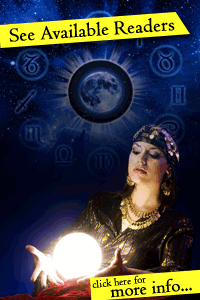Credit Card Callers
OPERATOR ASSIST
Available 10am to 6pm daily for bookings/Issues
Billed as Access Positive
*You must accept our Terms of Use

Home > Psychic Blog > How To Decrypt The Meaning of The Tarot Cards
How To Decrypt The Meaning of The Tarot Cards
Many people believe in the power of the tarot card, because, according to psychologists, each one of us creates our own realities and our own destinies. In a conventional tarot spread, the final outcome card is often believed to be mystically determined by all the preceding cards, which depict or represent emotions, thoughts, attitudes and circumstances surrounding an issue which are already known by the seeker, at some level of awareness. Some experts compare a tarot reading as feeding all known information on a personal computer (which in this case serves as the subconscious mind). The mind then tabulates and processes the most likely outcome, relative to the information given. Here are some helpful tips on how to decipher the meaning of the tarot cards.
How To Fully Associate With Each Card's Images
A standard tarot deck generally consists of 22 Major Arcana cards and 56 Minor Arcana cards. The Major Arcana cards bear more weight, because they represent major life-changing issues, events and possibilities. The Minor Arcana cards though should not simply be brushed-off as useless, since each of them depict bits and pieces of daily life, and are crucial to interpreting the final outcome. Mastering the tarot requires understanding and associating with each card's imagery. While some cards have obvious meanings, others require a more in-depth analysis. For example, let's look at the Three Swords. The Three Swords depict a heart being pierced by swords, which would not be that hard to deduce. Other cards however can not be easily deciphered.
Reversed Cards - What Should You Do With Them?
If you're not that careful with keeping the tarot cards in order, and you don't properly shuffle them as well, some or all of the cards laid out for reading will be upside down, hence they will be referred to “reversed” cards, and could carry a different meaning, as opposed if they were laid-out upright. A reversed card could mean the exact opposite of the upright card, however may also offer a watered-down version of the card's meaning. The ability to assess the meaning of a reversed card all depends on the seeker's strong association with the cards.
Why It Pays To Ask Questions Properly
In doing a tarot reading for another person, it's important to ask questions properly, or else your reading will be very ambiguous, and could actually mean nothing at all. Remember that the tarot does not simply offer yes or no answers, therefore one should place careful though on how to re-word the question. If for instance, the seeker is asking “will my boyfriend come back to me?, it may be hard to quickly say yes or no, specially to an open-ended question. However, if the question were like “What is my boyfriend thinking in relation to me?”, then it could probably offer a far more accurate reading.
The job of becoming a proficient tarot reader is not an overnight thing, since it takes a lot of time and patience. And like with any other discipline, tarot reading and interpretation requires patience and hard work. Therefore, you need to give ample time and devote each day to learning, and understanding it. One good way to start is by initially doing readings with only one suit of the Minor Arcana. Once you've already covered the basics, next check the meanings of specific cards and their numerological relevance. You can easily avail of free tarot resources from the Internet, and from specialty tarot guides and books in the bookstore.
Disclaimer
This psychic site and its owners are not liable for any direct, indirect, incidental, consequential, or punitive damages arising from using this site, the psychic contractors listed on it, or its content. By giving us your email address you agree to allow us to send you occassional maketing materials. We will never pass your details to another company.
Terms of Use
You must accept and agree to our Terms of Use before using our services.



















